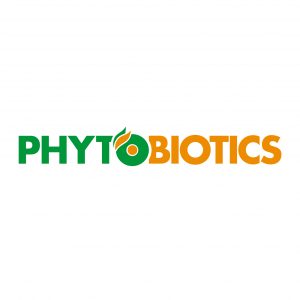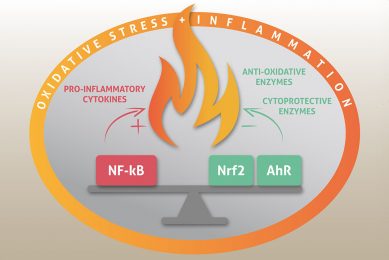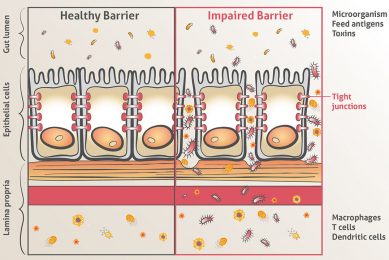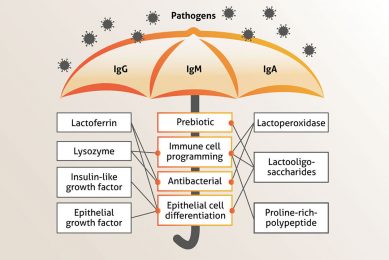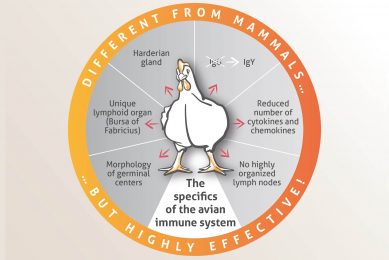A really hot topic: Heat stress
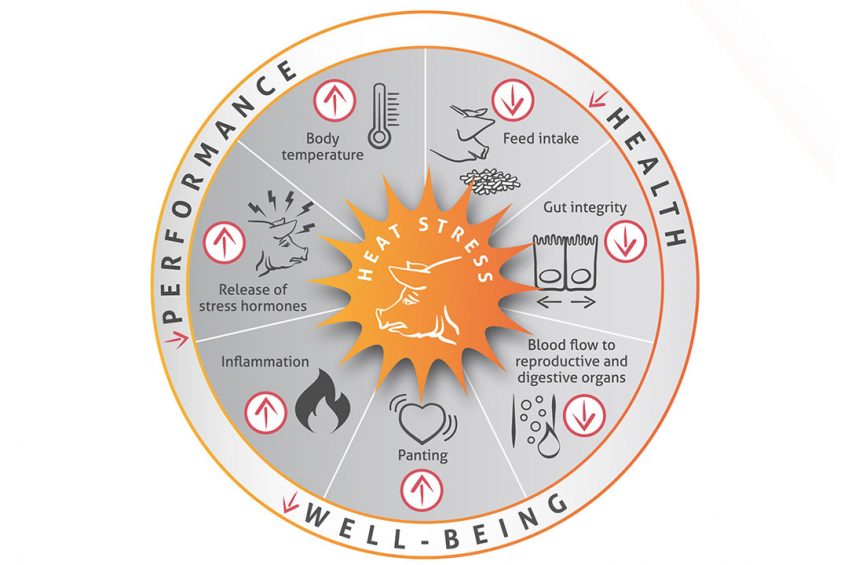
Feed additives company Phytobiotics has invited a panel of renowned experts from around the globe to share their knowledge and expertise into the interplay between the immune system, inflammation, the gut microbiota on the one hand, and animal health and performance on the other. In this the third in the series of ‘Hot Talks’ the issue of heat stress is discussed and its effects on physiology, well-being, and performance.
Tobias Steiner (TS): Good morning Jeremy. It is my pleasure to talk to you about a major topic that worries the livestock industry in large parts of the world to an increasing extent: Heat stress (HS).
You have been conducting research on the effects of HS for many years. What triggered your interest in this particular topic? Can you give a brief definition of HS?
Jeremy Cottrell (JC): When I became aware of the effects of HS on the gut in livestock my initial reaction was one of surprise, which then led to intrigue! My initial interest was in how heat stressed animals end up with damage to their gut lining, but since then my focus has widened substantially and how livestock manage high environmental heat loads is still as intriguing as ever. There could be quite a few definitions for HS, such as the appearance of panting. But for me it is when an animal is unable to prevent increases in their core body temperature.
Are all farm animal species sensitive to HS to the same extent?
There’s quite big differences in the sensitivity between species and in turn how they respond to HS. For humans, we have an efficient sweating response. Pigs and poultry do not have sweat glands so rely on different mechanisms to dissipate body heat. As they are less efficient these mechanisms have unintended consequences, where essentially the animal prioritises thermoregulation over normal function. Regardless of the species activities like pregnancy and lactation generate large amounts of body heat, making those animals less tolerant to increased temperatures. E.g. pregnant or lactating animals will be more sensitive to heat than counterparts. Dairy cows in particular are more sensitive to heat due to the large volumes of milk produced, but also their large body size conserves heat more than smaller animals.
What are the most visible behavioural and physiological consequences of HS and how do they finally affect health, well-being and productivity?
To me the most visible behavioural response in livestock is panting, which works similarly to sweating by increasing evaporation, but of saliva. HS will also reduce feed intake, which has clear implications for productivity. But heat stressed animals may also be less efficient at digesting their food as HS compromises their digestive tract. This arises as during HS the body essentially forms a heat pump, redirecting blood from the gut to the skin. This allows heat to radiate to the environment more readily, but restricting blood flow to the gut.
In your papers I often read about respiratory alkalosis in response to HS. Can you explain this term and why this is an issue?
There’s quite a bit to be learnt about the impacts of respiratory alkalosis, but maybe you’ve felt light headed after blowing up some balloons? This arises through an elevated exhalation of breath and has parallels to elevated panting in livestock. The “alkalosis” signifies increasing pH, which arises due to loss of acidic carbon dioxide due to exhalation. Blood pH is very tightly regulated, as it governs every biochemical reaction in the body. There are mechanisms to contain alkalosis from occurring, even when panting, but these come at a cost to the animal and make them less efficient.
There is a link between inflammation and heat stress. How do these relate?
One of the functions of the gut is to form a barrier from the inside of the body to the external environment in the digestive canal. As heat stress compromises the gut this barrier function is diminished, allowing entry of microbes and antigens and resulting in inflammation.
Are there major endocrine changes triggered by HS?
Endocrine responses are quite central to regulating body temperature and therefore the response to HS. Perhaps the best characterised example is thyroid hormone, which regulates body temperature by adjusting basal metabolic rate. When an animal is hot, they reduce their level of thyroid hormone and their heat production. Although this helps the shorter term aim of maintaining body temperature, thyroid hormone is essential for growth and studies have shown the correlation between reduced thyroid hormone and growth rates in warmer temperatures. Other endocrine responses can occur during acute HS events such as the appearance of stress hormones like cortisol.
Is there a major impact of HS on fertility of sows, cows or poultry breeders?
The impact on the reproductive herd is probably the most significant in any farming enterprise. There are effects on egg quality, conception rates and embryo survival, leading to reduced numbers of progeny born. There are further reductions in wean to oestrus intervals, lowering the reproductive efficiency of the herd. Recent results from our laboratory have also shown a “programming” effect on the developing foetus, such that they will be unable to grow as efficiently as animals that did not experience HS.
How can we prevent the negative impact of HS in practice? Are there suitable nutritional strategies?
Absolutely! There are 3 main levers available, engineering, genetics and nutrition. Each has their own benefits and trade offs, with the reality that any enterprise needs to use all 3.
Engineering controls can be as simple as shade cloth, but also extend to spray misters, fans and evaporatively cooled sheds. Engineering controls are very effective but can come with significant cost overheads.
Particularly in cattle and sheep there are tropically adapted breeds, but the trade off can be that they are less productive or have product quality issues.
By comparison there are few downsides to improved nutrition. When properly deployed the increased cost should provide a positive return on investment.
You have plenty of experience investigating the impact of HS and nutritional interventions. How do you recommend the industry to design experiments in order to investigate the efficacy of “HS products”?
This can be very difficult to show under commercial settings as there can be big differences between sheds and seasons. Therefore, I recommend utilising a single shed that has the ability to have multiple feed lines so that diets can be compared under the one roof. I would also recommend making comparisons over more than one summer due to differences in temperature and humidity.
Can you share your perspective on the further relevance of HS for the livestock industry?
Even if the most ambitious targets for emission reductions are reached global temperatures are set to rise for some time. This means that not only is there going to be an increased incidence of heat waves, but longer summers and the need to manage HS in periods of the year when it is not typically encountered. Adaptation to this new normal is going to require a blended approach, optimising facilities, where possible using more adapted livestock and paying close attention to summer rations.
Thank you for the interview.
Stay tuned for our next interview with Bernd Kaspers, who will discuss the specifics of the avian immune system.


